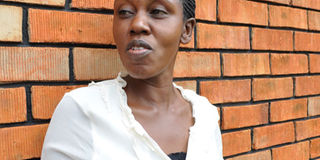Why cancer cases are on the increase in Uganda

What you need to know:
Rebecca Mayengo, the chairperson of the Uganda Women Cancer Support Organisation (UWOCASO), says many people who develop cancers do not seek early medical care because they believe the disease cannot be cured
In Uganda, breast and cervical cancers are one of the leading causes of death among women. Dr Fred Okuku, an oncologist at the Uganda Cancer Institute at Mulago, says between 300 to 400 women are diagnosed with breast cancer at the institute annually.
Rebecca Mayengo, the chairperson of the Uganda Women Cancer Support Organisation (UWOCASO), says many people who develop cancers do not seek early medical care because they believe the disease cannot be cured.
“This explains the high death rates because by the time a person goes for treatment, they are too sick and the cancer is in advanced stages, where even the best treatment cannot save a life,” says Mayengo.
According to Dr Okuku, most cancer cases registered at the institute are usually in the advanced stages, when they are expensive to treat.
The numbers
He says breast and cervical cancers are more common among young women who are between the ages of 18 and 35, compared to the past when they used to be older. To address the challenge, Dr Okuku says increased public awareness and knowledge is crucial. “Once detected early enough, breast cancer can be treated easily and completely cured,” says Dr Okuku.
Globally, the cancer burden is on the increase, especially in low and middle income countries. According to the World Health Organisation (WHO), there will be 13.2 million cancer-related deaths every year, by 2030.
“People should know that one per cent of the cancer patients we see at the institute are men who report with advanced breast cancer because many do not know they can also catch this type of cancer,” says Dr Noleb Mugisha, the head of the comprehensive community cancer programme, at the Uganda Cancer Institute.
He notes that breast cancer spreads faster to the rest of the body in men than women, because men’s breasts have a small surface area compared to women. However, Dr Mugisha says 90 per cent of breast lumps in teenagers are not cancers, and overtime, they disappear on their own.
“But since we cannot tell whether a lump is cancerous or not, it is advisable for all women and teenage girls to go for clinical breast examination,” adds Dr Mugisha.
Treatment options
Breast examination usually involves the use of ultra sound CT scan, a mammogramme (x-ray of the breast) or a biopsy. There are four basic ways of treating breast cancer, and different cancers respond differently to these treatment options.
“Surgery may involve removing the lump or cutting off the affected breast. Surgery stops cancer cells from spreading to the rest of the body,” says Dr Mugisha.
After surgery, the wound is left to heal, and a month later, the patient starts chemotherapy. Chemotherapy is followed by radiotherapy. This is a process where the suspected cancerous area is exposed to radiations to kill the cancer cells. The number of exposures a patient goes through depends on the intensity of the cancer cells in the body.
Hormonal therapy
Another treatment for breast cancer is hormonal therapy, which blocks hormonal secretion. Hormonal therapy may be administered before or after radiotherapy. However, Dr Mugisha says, some types of cancer may not respond to hormonal therapy. This is because the type of breast cancer common among most African women is aggressive and spreads faster to the rest of the body.
“After treatment, it takes five years to declare a person completely cured, and during this time we examine them twice a year for any re-occurrence of cancer cells,” adds.
Dr Mugisha says more public awareness about cancers should be promoted.




